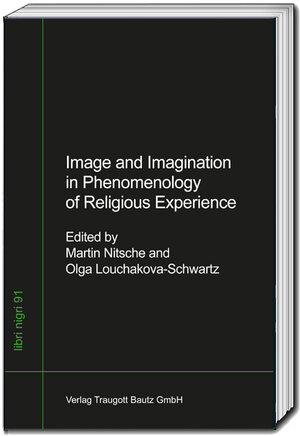Image and Imagination in the Phenomenology of Religious Experience
von Martin Nitsche und Olga Louchakova-SchwartzWhile human beings have probably always been fascinated by images, we live in an image-obsessed age in which images powerfully shape our lives.
The writers in this volume are keenly attentive to the ways in which we all are both image bearers and image makers.
Although their reflections often arise from and relate explicitly to religious imagery, their explorations have much wider implications.
They delve deeply into such issues as the ways in which images both reveal and conceal, the ways in which images are interpreted, and the ways in which we use images to define ourselves and tell our stories.
This is a powerful volume, full of thought-provoking analyses of the phenomenon of the image and its role in human being-in-the-world.
Topics such as embodiment, mysticism, ritual, touch, creation, and suffering are explored with sensitivity, nuance, and insight.
In short, the authors show us a great deal about how images embody whatever it is we take to be ‘sacred’.
Bruce Ellis Benson, University of Nottingham
This volume presents new findings on religious images, in their relationship to appearance and phenomenality, to being, transcendence, liminality, reduction, original self-giving, evidence, and other topics of regressive and constitutive phenomenology.
Drawing on Christian, Islamic, and cross-cultural folk testimony, the volume creates an incisive reference that opens new avenues for phenomenological research.
The writers in this volume are keenly attentive to the ways in which we all are both image bearers and image makers.
Although their reflections often arise from and relate explicitly to religious imagery, their explorations have much wider implications.
They delve deeply into such issues as the ways in which images both reveal and conceal, the ways in which images are interpreted, and the ways in which we use images to define ourselves and tell our stories.
This is a powerful volume, full of thought-provoking analyses of the phenomenon of the image and its role in human being-in-the-world.
Topics such as embodiment, mysticism, ritual, touch, creation, and suffering are explored with sensitivity, nuance, and insight.
In short, the authors show us a great deal about how images embody whatever it is we take to be ‘sacred’.
Bruce Ellis Benson, University of Nottingham
This volume presents new findings on religious images, in their relationship to appearance and phenomenality, to being, transcendence, liminality, reduction, original self-giving, evidence, and other topics of regressive and constitutive phenomenology.
Drawing on Christian, Islamic, and cross-cultural folk testimony, the volume creates an incisive reference that opens new avenues for phenomenological research.







